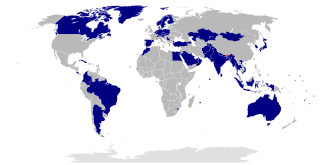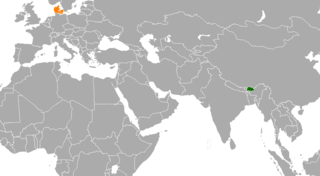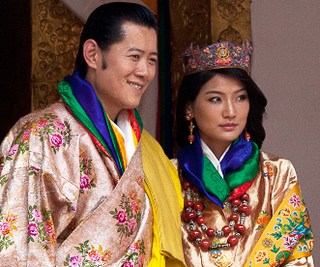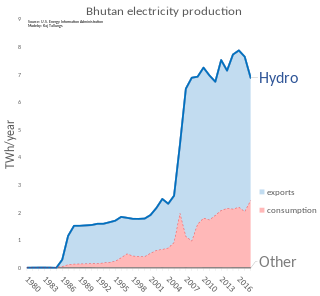
Bhutan's early history is steeped in mythology and remains obscure. Some of the structures provide evidence that the region has been settled as early as 2000 BC. According to a legend it was ruled by a Cooch-Behar king, Sangaldip, around the 7th century BC, but not much is known prior to the introduction of Tibetan Buddhism in the 9th century, when turmoil in Tibet forced many monks to flee to Bhutan. In the 12th century, the Drukpa Kagyupa school was established and remains the dominant form of Buddhism in Bhutan today. The country's political history is intimately tied to its religious history and relations among the various monastic schools and monasteries.

Thimphu is the capital and largest city of Bhutan. It is situated in the western central part of Bhutan, and the surrounding valley is one of Bhutan's dzongkhags, the Thimphu District. The ancient capital city of Punakha was replaced as capital by Thimphu in 1955, and in 1961 Thimphu was declared as the capital of the Kingdom of Bhutan by the 3rd Druk Gyalpo Jigme Dorji Wangchuck.

The Kingdom of Bhutan is a sovereign nation, located towards the eastern extreme of the Himalayas mountain range. It is fairly evenly sandwiched between the sovereign territory of two nations: first, the People's Republic of China on the north and northwest. There are approximately 477 kilometres of border with that nation's Tibet Autonomous Region. The second nation is the Republic of India on the south, southwest, and east; there are approximately 659 kilometres with the states of Arunachal Pradesh, Assam, West Bengal, and Sikkim, in clockwise order from the kingdom. Bhutan's total borders amount to 1,139 kilometres. The Republic of Nepal to the west, the India to the south, and the Union of Myanmar to the southeast are other close neighbours; the former two are separated by only very small stretches of Indian territory.

Bhutan has diplomatic relations with 54 of 193 member states of the United Nations, including the European Union. Bhutan's limited number of such relations, including the absence of formal relations with any of the permanent members of the United Nations Security Council, is part of a deliberate isolationist policy of limiting foreign influence in the state. This stance has been safeguarded by close relations with India, of which Bhutan has previously been considered a protected state.

Dzongkha is a Sino-Tibetan language spoken by over half a million people in Bhutan; it is the country's sole official and national language. The Tibetan script is used to write Dzongkha.

The Kingdom of Bhutan is divided into 20 districts. Bhutan is located between the Tibet Autonomous Region of China and India on the eastern slopes of the Himalayas in South Asia.

Bhutan, officially known as the Kingdom of Bhutan, is a landlocked country in the Eastern Himalayas, located between China and India. Bhutan is known as "Druk Yul," or "Land of the Thunder Dragon". Nepal and Bangladesh are located near Bhutan but do not share a land border. The country has a population of over 754,000 and territory of 38,394 square kilometers (14,824 sq mi) which ranks 133rd in terms of land area and 160th in population. Bhutan is a constitutional monarchy with Vajrayana Buddhism as the state religion.

The following outline is provided as an overview of and topical guide to Bhutan:
Banking in Bhutan, a small country in East Asia, is an industry that has grown slowly as the country has pursued modernization. The country has a vibrant informal culture of finance which only weakly integrates formal financial services.

The Raidāk River, also called Wang Chhu or Wong Chhu in Bhutan, is a tributary of the River Brahmaputra, and a trans-boundary river. It flows through Bhutan, India and Bangladesh. It is one if the main river in Alipurduar District, India.
The Bhutan Olympic Committee (BOC) was created in November 1983 with the King of Bhutan as its President, with its headquarters at Thimphu, Bhutan. Following this recognition, Bhutan participated for the first time in the 1984 Olympic Games held in Los Angeles when three men and three women archers represented Bhutan.

Bhutan–Denmark relations refers to the current and historical relations between Bhutan and Denmark. Denmark has a liaison office in Thimphu. Diplomatic relations were established in 1985. Denmark is the second-largest provider of development aid to Bhutan, after India.

Travel to the Kingdom of Bhutan is highly regulated under the policy "High Value, Low Impact Tourism" in order to minimize the impact on the country's unique society and environment. Bhutanese policy ensures that only a limited number of tourists enter the country at any one time, preventing it from being overwhelmed by mass tourism and thus altering its character, and that the tourists who do come get the most out of their visits.

Football is a sport with a comparatively brief history in Bhutan, having had an initial period of favour in the mid-twentieth century, when it was first introduced to the country by visiting teachers from India and Europe. It has only achieved significantly renewed popularity in the early 2000s, following the advent of satellite television broadcasting, with historically national sport being archery. Consequently, the domestic game was underdeveloped. After the establishment of an initial league in the late 1980s, little in the way of recorded competition took place until the mid-1990s when a formal championship, the A-Division, was created. Football became the most popular sport in Bhutan.

The wedding of Jigme Khesar Namgyel Wangchuck, King of Bhutan, and Jetsun Pema took place on 13 October 2011 at the Punakha Dzong in Punakha, Bhutan. The current King of Bhutan, Jigme Khesar Namgyel Wangchuck, married Jetsun Pema, who became Queen Ashi Jetsun Pema Wangchuck. Both are descendants of the 48th Druk Desi of Bhutan and 10th Penlop of Trongsa, Jigme Namgyal.

The military history of Bhutan begins with the Battle of Five Lamas in 1634, marking Bhutan's emergence as a nation under the secular and religious leadership of Zhabdrung Ngawang Namgyal. Before Bhutan emerged as a separate nation, it remained on the periphery of Tibetan military and political influence. The region that became Bhutan was host to several battles and waves of refugees from turmoil in Tibet. After its founding, Bhutan was invaded numerous times by outside forces, namely Tibetans, Mongols, and the British. Bhutan meanwhile invaded its traditional tributaries in Sikkim, Cooch Behar, and the Duars.

There are a number of environmental issues in Bhutan. Among Bhutan's most pressing issues are traditional firewood collection, crop and flock protection, and waste disposal, as well as modern concerns such as industrial pollution, wildlife conservation, and climate change that threaten Bhutan's population and biodiversity. Land and water use have also become matters of environmental concern in both rural and urban settings. In addition to these general issues, others such as landfill availability and air and noise pollution are particularly prevalent in relatively urbanized and industrialized areas of Bhutan. In many cases, the least financially and politically empowered find themselves the most affected by environmental issues.

Energy in Bhutan has been a primary focus of development in the kingdom under its Five-Year Plans. In cooperation with India, Bhutan has undertaken several hydroelectric projects whose output is traded between the countries. Though Bhutan's many hydroelectric plants provide energy far in excess of its needs in the summer, dry winters and increased fuel demand makes the kingdom a marginal net importer of energy from India.

Eastern South Asia is a subregion of South Asia. It includes the countries of Bangladesh, Bhutan, India, and Nepal. Geographically, it lies between the Eastern Himalayas and the Bay of Bengal. Two of the world's largest rivers, the Ganges and the Brahmaputra, flow into the sea through Eastern South Asia. The region includes the world's highest mountainous terrain and the world's largest delta, and has a climate ranging from alpine and subalpine to subtropical and tropical. Since Nepal, Bhutan, and northeast India are landlocked, the coastlines of Bangladesh and East India serve as the principal gateways to the region.





















